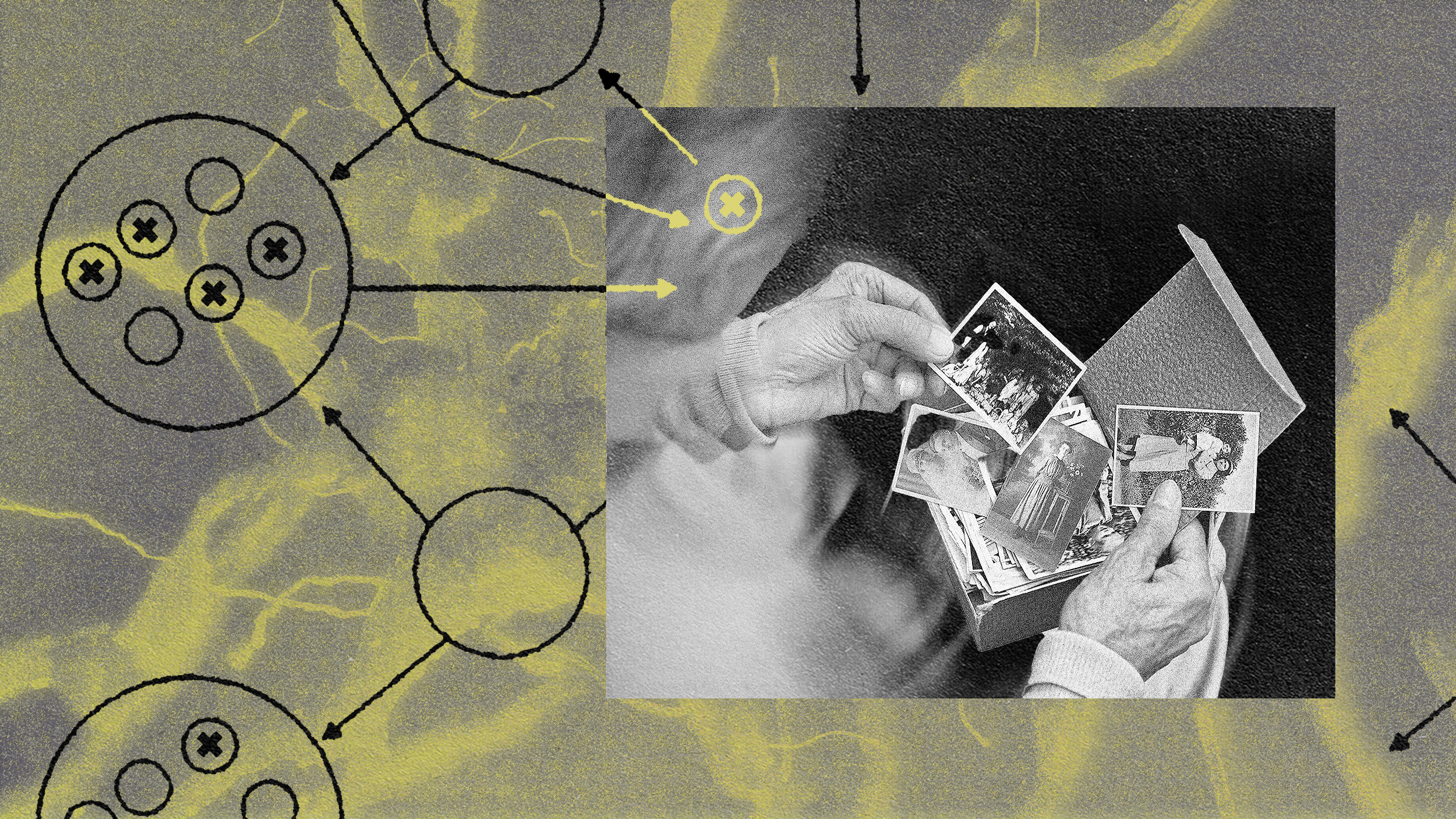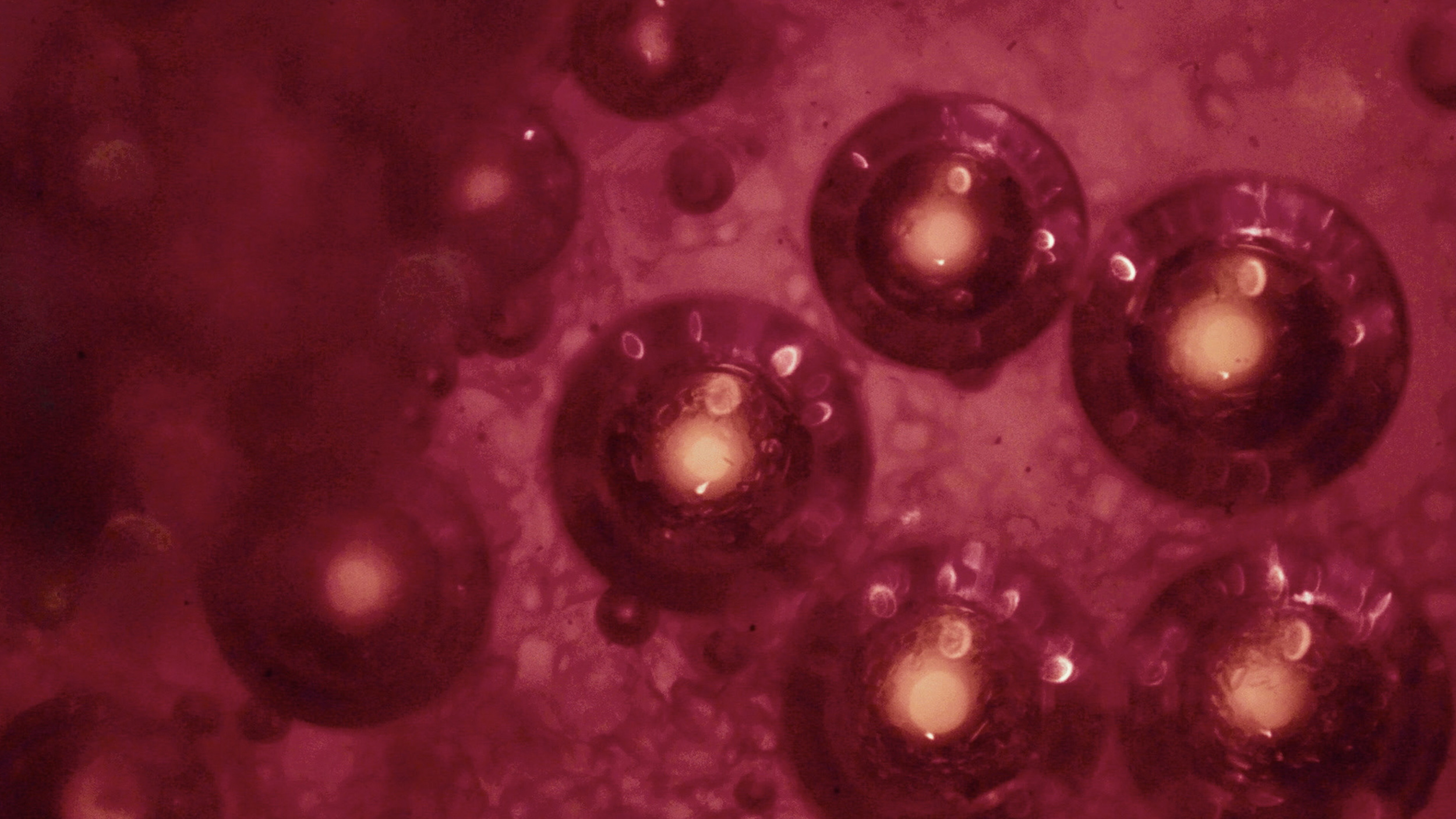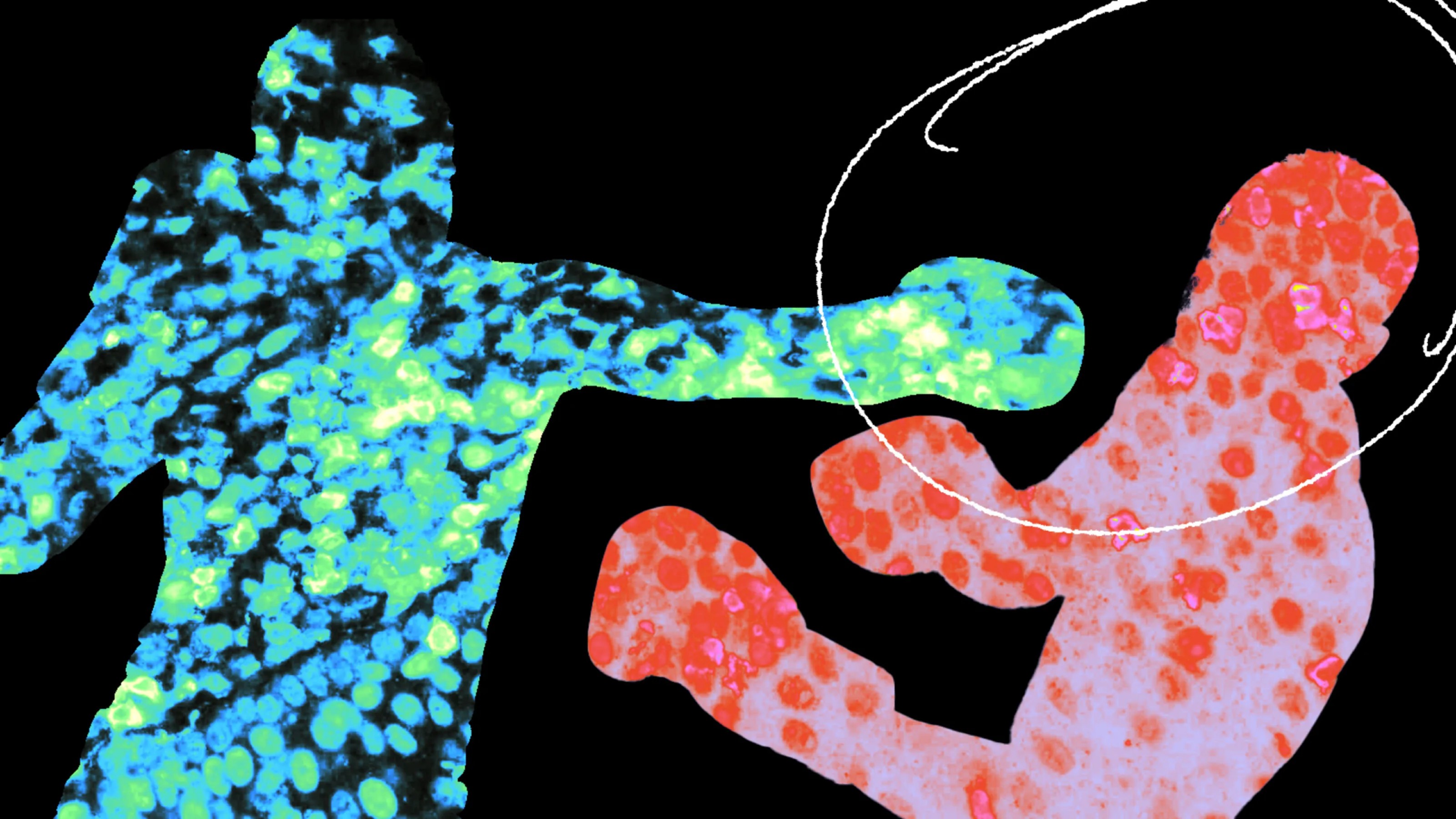Four people in the world have a mysterious dementia. Could it hold a key to Alzheimer’s?

Credit: Steven HWG via Unsplash
This article was originally published on our sister site, Freethink.
Her son had not been acting himself: a sweetheart, an adoring husband and father, he had turned mean. He would leave the door to their basement open, despite having an infant, and would leave medicine for his MS in reach of the kids on the counter.
But what finally proved that something was deeply, deeply wrong was the numbers.
Her son had always been exceptional at math, “Susan” tells me (a pseudonym to protect her family’s privacy). A business owner, he had always been capable of doing complex functions in his head. But his company’s books had suddenly become disarrayed. Susan visited him in his home office and pointed out the problem.
“He broke down and cried,” Susan says. “He said, ‘mom, you don’t understand. I can’t add or subtract anymore.'”
Her son was suffering a form of frontotemporal dementia (FTD), a rare class of neurodegenerative disorders which attacks the brain’s frontal and temporal lobes. It often comes on earlier than other forms of dementia, such as Alzheimer’s — between the 40s and 60s — and causes changes in behavior, mood, and attitude. Those afflicted become someone else.
Like a horror movie villain, the disease stalked their family.
Susan heard similar stories about her ex-husband, their father. Her daughter began to exhibit symptoms, a clue that it could be a hereditary problem; soon her other son did as well.
But they had no idea what it was, or how to fight it.
Half a world away from Susan’s American family, John Papatriantafyllou, director of the memory outpatient clinic at Medical Center Hospital of Athens, was caring for “Mary.” Her husband had brought her to the hospital from western Greece after upsetting changes in her behavior and attitudes unbalanced their working class family. She would spend recklessly, act indifferent to family issues, fight with her husband; she would wash already clean clothes, and clean the house with filthy water.
“These strange things,” Papatriantafyllou says. “Like something is going wrong with her.”
Mary, as well as Susan’s children, have a rare form of FTD — in fact, the rarest, caused by a single mutation in one of their genes, a mutation previously unseen by science.
But this devastating mutation, confirmed in just these four people in the world, could be the key to unlocking new drugs and diagnostic tools for the most common forms of dementia, including Alzheimer’s.
A brain unlike any other
When Susan’s son’s issues first emerged, they thought perhaps it was related to his MS. But University of Pennsylvania MS specialist Clyde Markowitz wasn’t so sure.
In the spring of 2009, Markowitz referred her son to Geoffrey K. Aguirre, a behavioral neurologist at UPenn, to figure out what was happening.
“I went as far as I possibly could with any testing that was available,” Aguirre says. “I said ‘boy, it’s gotta be something new, and it’s gotta be something genetic.'”
In 2013, Susan noticed what appeared to be symptoms in her daughter, and Aguirre referred them to the NIH Undiagnosed Disease Program — think “House” for research scientists. (Remarkably, Susan’s brother had been to the NIH as well as a teen, for another improbably rare disease.)
Then, late in the winter of 2016, Susan’s son died. They arranged an autopsy.
What UPenn neuropathologist Edward Lee found was a brain unlike any of the hundreds he had seen before — or the thousands his colleagues had seen, either. Inside, there were tangles of tau protein, like one would see in an Alzheimer’s patient. And, in another part of the brain, he discovered vacuoles: holes in the neurons — the horrifying calling card of prion diseases, like kuru or mad cow.
But this was not Alzheimer’s or a prion disease; it was something new.
That same month, NIH identified a mutation of interest on the family’s VCP gene. Many dementias are characterized by protein abnormalities, like Alzheimer’s notorious amyloid plaques and tau tangles. The VCP gene detangles these protein clumps in the brain — or is supposed to.
With a suspect mutation identified, the researchers named this new form of FTD “vacuolar tauopathy” (VT), after the signature vacuoles and tau tangles found in the autopsy.
But if you are going to claim the discovery of a brand new, genetic form of dementia, you must provide irrefutable evidence. Lee and his postdoc Nabil Darwich got to work.
Using cellular and mouse models, the team proved that the VCP mutation was associated with the tangling of tau proteins.
The VCP mutation directly causes the buildup of tau protein between brain cells — a buildup seen in Alzheimer’s as well.
“If this mutation … causes tau (aggregation), perhaps the converse is true,” Lee says.
“Perhaps if you can boost — or enhance — VCP activity, that could help break apart tau aggregates.”
“It gives us more shots on goal”
Estimates from the WHO peg the number of people with dementia — including Alzheimer’s, Parkinson’s, FTD, and other neurodegenerative diseases — at around 50 million worldwide. Of these, Alzheimer’s has the lion’s share, potentially causing up to 70% of dementia cases.
It is a disease burden borne with heart-rending intimacy, as loved ones slowly fade away or jarringly alter who they were. And it is a disease with precious few treatments coming down the pike.
Alzheimer’s, despite its prevalence, has proved almost impossible to treat. Part of this is the murkiness inherent when doctors are battling diseases inside the brain. A gray box at best, shielded behind the blood-brain barrier, the nervous system is a difficult place to claim a victory. We do not know what sickens and slays the cells in these patients, or how to stop that process, Aguirre wrote in an email.
Part of it is that dementia cases and causes often aren’t cut and dry.
“For Alzheimer’s disease, we only find maybe 25% of our cohorts are pure (Alzheimer’s),” says Lynn Bekris, a researcher at the Cleveland Clinic’s Genomic Medicine Institute. The rest will have mixed pathologies, showing signs of multiple dementias; shades of Parkinson’s, say.
Part of it is that research on once-promising treatment targets, like the amyloid plaques, keep coming up maddeningly short. Drugs have wiped away amyloid plaque in mice and humans, only to leave Alzheimer’s running its course. Another recent hopeful drug candidate, aducanumab, has just recently come into doubt.
Tau protein is another prime target for Alzheimer’s drugs. Under normal conditions, tau protein helps form the infrastructure that delivers nutrients to the brain cells. In Alzheimer’s, these proteins clump and tangle together, a hallmark of the disease.
The VCP gene has been studied for drug potential before, Bekris says. “There’s ways that people are hoping they can either inhibit it, or enhance it.”
But the ultra-rare mutation that causes VT is different; it affects tau, unlike the other mutations, and its impact sits in a different part of the protein the VCP gene makes.
“It’s potentially interesting in two types of dementias,” Bekris says. “It could be interesting in (Alzheimer’s), and it could also be interesting for the FTD.”
The deleterious VT mutation has now been shown to be associated with tau protein tangling. If researchers could find a way to enhance VCP, they could potentially then detangle the tau — and possibly provide a new drug for not only FTDs, but also Alzheimer’s.
“The more genes we discover that are distinct mechanisms, that will be helpful because, again, it gives us more shots on goal,” Lee says.
But VCP seems to have an optimal level in the brain — too enhanced is bad, as is too inhibited — and it performs multiple jobs in neural cells, necessitating caution. “Are we sure there’s not going to be some off-target effect that might not be good?” Lee says. “We won’t know until we start going down this road, and seeing if it might be helpful.”
And even that, as always when dealing with Alzheimer’s, is tinged with uncertainty. It is a maddeningly slippery disease. Years ago, Papatriantafyllou recalls seeing slides showing remarkable improvement in a mouse model, leaving the clinicians in the audience in awe.
The treatment did not save people.
“It’s like sand,” Papatriantafyllou says — slipping forever through medicine’s fingers.
“And after that, twenty years after that, we don’t have anything,” he says.
Fear and hope
Thus far, the mutation that causes vacuolar tauopathy has been confirmed in only four people: Susan’s three children and Mary, in Greece. One other family is suspected of carrying the VT mutation in Japan.
Aguirre, Lee, and the researchers were driven to provide an answer for Susan, to find a cause for the disease attacking her children.
“This really weighed on me for years, trying to figure out what was wrong with this family,” Aguirre says. “To get an answer (for Susan) was something that really hung on me.”
The science was grinding; between the autopsy in 2016 and their publication in Science in 2020 Lee and his team amassed proof, ensured as much as they could that the insights their novel mutation provided were accurate.
“We wanted to do right by the family,” Lee says. “I’d motivate my student, I’d say ‘get that done, because the family’s waiting.'”
And Susan is grateful for their efforts. Her son’s symptoms could have been written off as complications from MS; his dementia could have been classified an already known cause, and the NIH and Lee may have never been involved.
“It was their humanity that helped get me through this,” Susan says.
But they have provided more than an answer; they have provided a choice. With the mutation identified, Susan’s grandchildren can now be tested for it (none yet have). It is a deeply personal decision, and offers both agony and agency.
Susan’s grandson “Josh,” who has seen VT progress in his mother, feels nervous about the test, although he considers it necessary. “I definitely want to get tested and find out if we have it or not,” Josh says. “Because if we do, there’s a high chance if we have kids to pass it on.”
If the mutation is present, then options — like IVF — could ensure the mutation is stopped in this generation.
“Ashley” is the daughter of Susan’s surviving son. She has been wrestling with her decision to be tested — confiding in close friends, her partner, her sister, her mother. The test could provide her a concrete no, or it could give her a 50/50 chance of yes; such a result would raise questions that are difficult to comprehend without being in such exceptionally rare circumstances.
“I have to wonder, is it ethically responsible of me to be in a long-term relationship like I am, not knowing what the eventuality of my state of mind is going to be?” she says. “Nobody can know.”
Josh and his sister “Jen” participate in studies at UPenn; Ashley wants to, as well, but has not yet. With neurological assessments and spinal taps, their lives — and potential mutation — may unlock new drugs and diagnostic models for those with FTD, Alzheimer’s, and other neurodegenerative diseases.
Using their dreadful gift to potentially help millions of others is now Susan’s mission; she wants to live to help each of her children until the end, ensuring their comfort, securing proper autopsies, and providing a stable adult in her grandchildren’s lives. She knows her children will die; she knows others may not have to in the future.
“Anything that we can do for science.”





